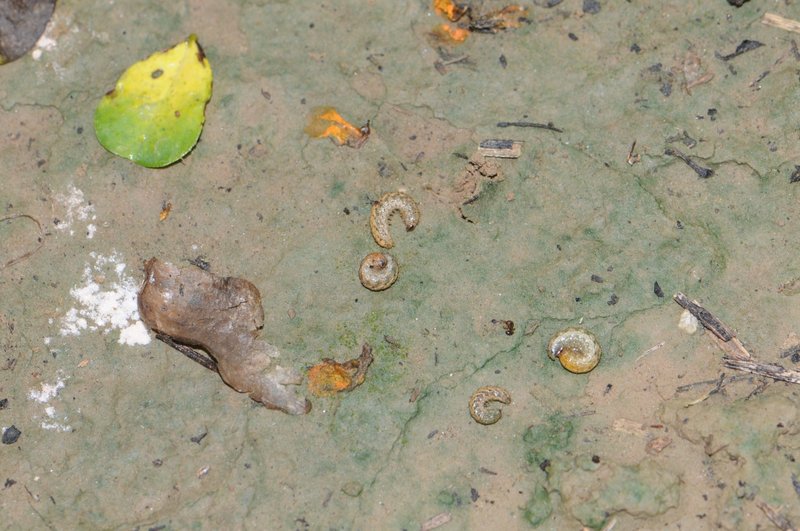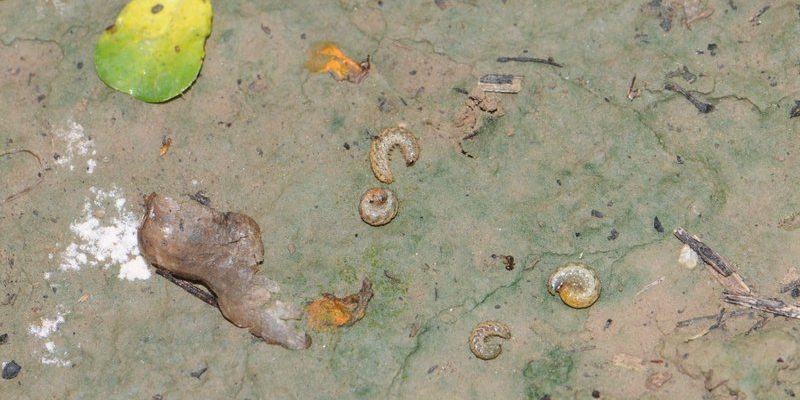
Peanut worms, or *Cryptaphelenchus spp.*, can be tricky to spot. They often blend in with their surroundings and can be easily confused with other pests. Identifying these tiny creatures isn’t just about being curious; it’s vital for farmers and gardeners who want to protect their crops. Let’s dive into the challenges that come with field identification and explore how to become a peanut worm spotter.
What Is a Peanut Worm?
Peanut worms are small, nematode-like pests that primarily affect peanut plants. They can cause a great deal of damage by feeding on the roots and the developing pods. When these worms invade, they can lead to stunted growth and a lower yield—definitely not what any farmer wants to see after putting in hard work.
These pests are usually around 0.5 to 1.5 centimeters long, making them quite small and difficult to spot without a keen eye. They thrive in moist environments, so if you’re checking your garden after a rainstorm, that might be the time to look closer. Picture this: you’re examining the soil and roots, but things start to look a bit muddled. This is where the identification challenges come into play.
Visual Identification Challenges
One of the main challenges in identifying peanut worms is their size and appearance. They tend to resemble other nematodes or even tiny larvae from various insects. The physical similarities can lead to misidentifications. For example, you might see a tiny worm-like creature and think, “That’s a peanut worm!” But if you don’t have some special knowledge, you could easily be wrong.
To help distinguish peanut worms, pay attention to their color and body shape. Generally, they are more cylindrical than other pests and might have a slightly transparent look. Here’s an eye trick for you: try using a magnifying glass. It can help reveal the details you might miss with the naked eye.
Another factor to consider is their habitat. Peanut worms prefer certain soil conditions. If you’re in a dry or sandy environment, the likelihood of spotting them decreases. So, if you think you’ve found one in the wrong environment, it might be time to reconsider.
Behavioral Cues and Movement
Identifying peanut worms can also be challenging because of how they move—or don’t move. These pests can be quite sedentary, remaining still for long periods. You might be searching for a wiggle or a crawl, but peanut worms often stay hidden, especially during the daytime when the sunlight is strong.
Observing their behavior can be a helpful clue during your search. When disturbed, they may squirm or retreat into the soil. If you’re gently digging around a suspected infested area, make sure to watch closely. This behavior can sometimes give you a better indication that you’re looking at a peanut worm rather than another pest.
Here’s a tip: consider the time of day you’re observing. Peanut worms might be more active at dawn or dusk, so planning your fieldwork can increase your chances of spotting them.
The Environment and Its Effects
The environment plays a big role in peanut worm identification. If the soil is too dry or too saturated, you might not find any worms at all. Since these pests thrive in well-drained, moist soil, understanding the environmental factors can help guide your search.
Another important aspect is knowing the type of plants in the area. Peanut worms are specific to peanut crops, so if you’re searching in a diverse garden or crop field, distinguishing between different kinds of pests can become even trickier. This is where understanding their ecological niche can be beneficial.
If you’re not finding peanut worms during your inspection, it might be worth considering whether you’re in the right habitat. This means knowing your plants and the soil conditions that are most favorable for these worms.
Using Tools for Identification
When it comes to spotting peanut worms, having the right tools can make a world of difference. While a magnifying glass is helpful, several other tools can assist you in making a more accurate identification.
– Soil Test Kits: These can help determine the moisture levels and overall health of the soil, which is crucial for understanding where peanut worms may thrive.
– Field Guides: There are several field guides available that include photos and descriptions of peanut worms and similar pests. This can be handy when you’re out in the field and need a quick reference.
– Smartphone Apps: Believe it or not, several apps can help you identify pests based on photos. If you’re comfortable using your phone in the field, this could be a game-changer.
Using these tools takes some practice, but they can enhance your ability to identify peanut worms and reduce the likelihood of misidentification.
Comparative Identification: Peanut Worms vs. Other Pests
To become a proficient peanut worm identifier, it’s essential to know how they compare with other pests. For instance, they can easily be confused with root-knot nematodes or other soil-dwelling insects. Understanding the unique characteristics of peanut worms can help you navigate this confusion effectively.
Root-knot nematodes, for example, tend to create galls on plants, which peanut worms do not. So if you see damage signs on the roots, take a moment to analyze what’s happening. Are there galls? If yes, then peanut worms might not be your issue.
Similarly, some worms may have different colorations or shapes. Keeping a visual comparison sheet handy can help you remember these differences. If you’re still unsure even after checking, consulting a local agricultural extension office can provide you with additional guidance.
Challenges in Accurate Reporting and Awareness
Finally, another significant challenge is accurately reporting and sharing information about peanut worms within the agricultural community. Misidentifications can lead to unnecessary treatments or a lack of action when it’s needed. This contributes to a lack of trust and knowledge around these pests.
Staying informed and sharing accurate experiences can help build a more educated community around pest management. Keeping records of your findings and observations can not only help you but also others who may face similar challenges.
Also, consider engaging in local workshops or forums where these issues are discussed. Collectively, you can learn more about peanut worms and how to identify them effectively, resulting in a more robust approach to pest management.
In conclusion, identifying peanut worms out in the field is no easy task. With their size, behavioral habits, and similar appearances to other pests, the challenges can pile up. But with careful observation, the right tools, and a solid understanding of their environment, you can improve your identification skills. Ultimately, this knowledge not only helps protect peanut crops but also enhances the broader understanding of pest management practices. So grab your gear and get ready to take on the hunt for peanut worms!

